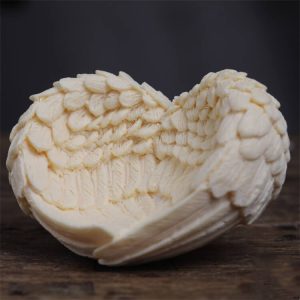What is Vegetable Ivory?
Vegetable ivory, scientifically known as Phytelephas, is the seed of the tagua palm tree (Phytelephas aequatorialis). This tree is native to the tropical rainforests of South America, particularly Ecuador. The seeds are harvested from the fallen fruits of the tree, and each seed contains a hard, ivory-like endosperm that resembles animal ivory in texture and appearance. This endosperm is what is commonly referred to as vegetable ivory.
The Beauty of Vegetable Ivory
Vegetable ivory showcases a natural beauty that is both elegant and unique. Each seed has its own distinct pattern and texture, making every piece of vegetable ivory truly one-of-a-kind. The creamy white to pale yellow color of vegetable ivory resembles that of traditional ivory, allowing for stunning creations that exude a sense of luxury and sophistication.

Versatility in Design
One of the most remarkable aspects of vegetable ivory is its versatility in design. Craftsmen and artisans are able to shape, carve, and polish vegetable ivory with relative ease, allowing for intricate and detailed designs. Jewelry makers, sculptors, and craftsmen have all embraced vegetable ivory due to its workability and ability to hold intricate patterns and designs.
Vegetable ivory can be transformed into a wide range of products, including:
- Jewelry: Vegetable ivory beads, pendants, and earrings are highly sought after for their natural beauty and sustainable appeal.
- Sculptures and Carvings: The workability of vegetable ivory allows artisans to create intricate sculptures and carvings, showcasing their talent and imagination.
- Buttons and Accessories: Vegetable ivory buttons add a touch of sophistication and elegance to clothing, while accessories like hairpins and brooches showcase the natural beauty of this sustainable material.
Environmental Significance
The use of vegetable ivory is not only aesthetically pleasing but also environmentally significant. Here’s why:
Sustainability
The harvesting of vegetable ivory is entirely sustainable. The tagua palm tree naturally drops its fruits, which contain the seeds. These fallen fruits are collected by local communities and artisans, ensuring that no harm is done to the tree itself. This sustainable harvesting method allows the tagua palm tree to continue its growth and contribute to the biodiversity of the rainforest.
Conservation Efforts
By choosing vegetable ivory over traditional animal ivory, you are actively participating in the conservation of wildlife and their habitats. The demand for animal ivory has led to the illegal poaching of elephants and other endangered species. By opting for vegetable ivory, you are supporting alternative materials that do not contribute to the destruction of wildlife populations.
Rainforest Preservation
The tagua palm tree is an integral part of the rainforest ecosystem. Its large leaves provide shade and shelter for various species, while its fruits serve as a food source for animals. By utilizing vegetable ivory, you are indirectly supporting the preservation of the rainforest by promoting the economic value of the tagua palm tree and discouraging deforestation.

Conclusion
Vegetable ivory, derived from the tagua palm tree, is a remarkable and sustainable material that unlocks a world of beauty and creativity. Its natural elegance, versatility in design, and environmental significance make it a preferred choice for artisans and conscious consumers alike. By choosing vegetable ivory, you are not only embracing a sustainable alternative to animal ivory but also supporting the preservation of rainforests and wildlife populations. So, unlock the beauty and sustainability of vegetable ivory and let its unique charm inspire your creations.
FAQ
1. Is vegetable ivory as durable as animal ivory?
Vegetable ivory is a durable material that can withstand everyday wear. However, it is important to protect it from excessive moisture and extreme temperatures to maintain its quality.
2. How can I care for vegetable ivory jewelry?
To care for vegetable ivory jewelry, simply wipe it with a soft, damp cloth to remove any dirt or dust. Avoid using harsh chemicals or submerging it in water. Store it in a dry place away from direct sunlight to prevent discoloration.
3. Can vegetable ivory be used for large-scale sculptures?
Yes, vegetable ivory can be used for large-scale sculptures. Its workability and strength make it suitable for creating intricate and detailed sculptures of various sizes.
4. Where can I find products made from vegetable ivory?
Products made from vegetable ivory can be found in specialty stores that focus on sustainable and eco-friendly materials. Additionally, online ZWCAO platforms and artisan markets often offer a wide range of vegetable ivory products.
5. Are there any restrictions on the trade and sale of vegetable ivory?
The trade and sale of vegetable ivory are generally not subject to the same restrictions and regulations as animal ivory. However, it is always important to ensure that the vegetable ivory you purchase comes from sustainable and ethically sourced suppliers.
